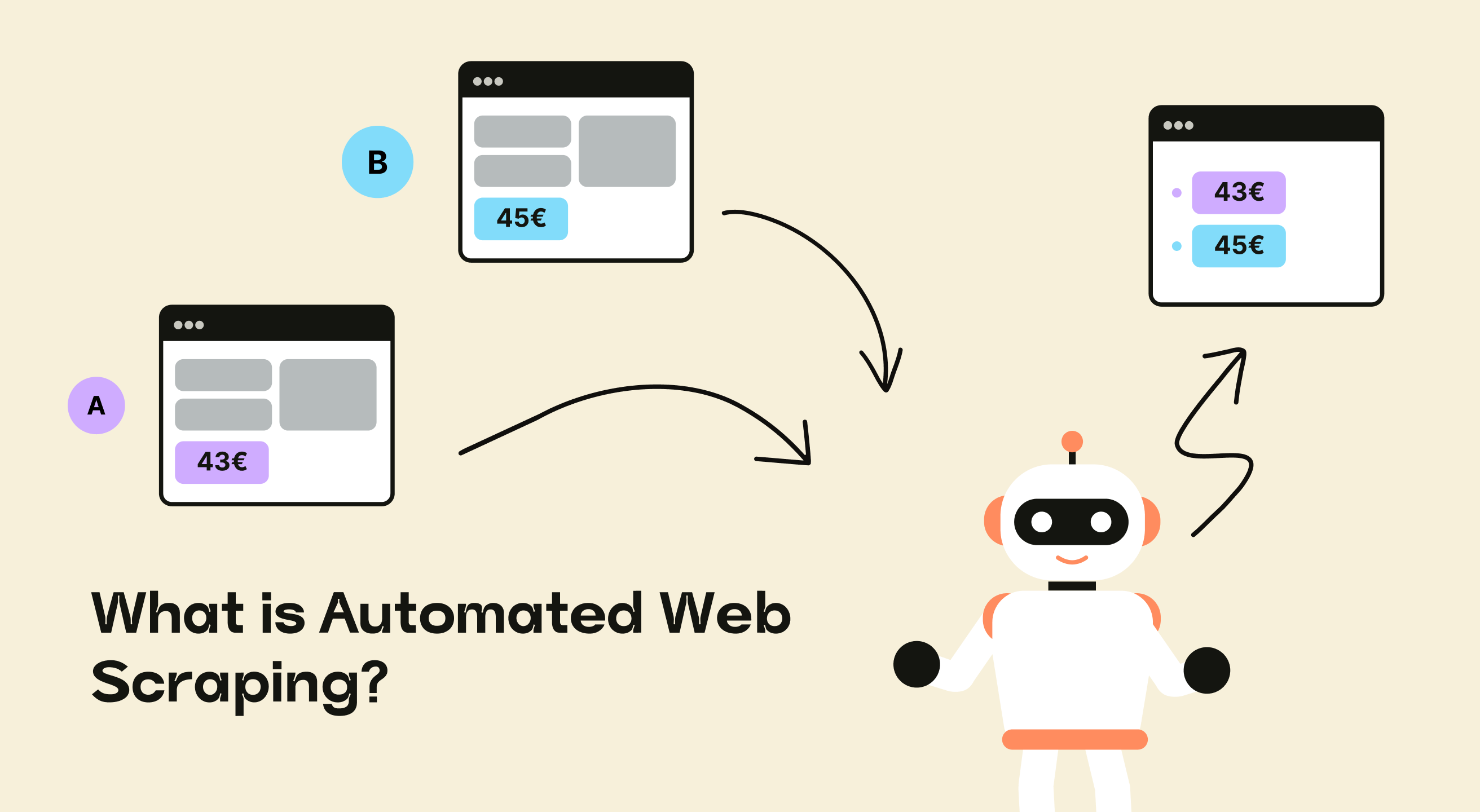Introduction
In today’s data-driven world, automated web scraping is transforming how businesses access and utilize real-time information. Instead of manually collecting data or relying on slow, costly methods, automated web scraping allows teams to extract pricing, product, and competitor insights — fast.
But what exactly is automated web scraping, how does it work without code, and why are retailers and analysts using it more than ever?
How Web Scraping Works (Without Writing Code)
Modern scraping platforms make it easy to extract data from websites to Excel using point-and-click interfaces.
These no-code web scraping tools allow users to:
- Select website elements visually
- Schedule scraping tasks
- Export scraped data in structured formats like CSV, Excel, or JSON
- Even download product images
This process is ideal for data analysts, retailers, and eCommerce teams looking to automate competitive research or pricing insights without developer support.
Web Scraping vs API Integration
While APIs are great for structured and authorized data access, they often:
- Limit what data you can retrieve
- Require technical knowledge to set up
- Change frequently or have usage limits
By contrast, web scraping tools offer greater flexibility. You can:
- Capture real-time competitor pricing
- Access public data that APIs don’t expose
- Combine product matching and scraping into a single automated workflow
That said, scraping and APIs aren’t mutually exclusive — advanced companies often use both to build a more complete data picture.
Is Web Scraping Legal in the EU?
Yes — web scraping is legal in the EU when used responsibly.
According to the EU’s Digital Markets Act, public data (that doesn’t violate user privacy or breach terms of service) can be legally accessed.
Key legal tips:
- Only scrape publicly available data
- Avoid collecting personal information without consent
- Respect robots.txt and rate limits
Most price monitoring and retail analytics software focuses only on publicly accessible pricing and product data, making it compliant by default.
Common Web Scraping Mistakes
- Scraping the wrong pages — Always verify that you’re targeting the pages with the data you actually need.
- Not handling pagination — Many sites load more data across multiple pages. Scrapers must handle “next” buttons or infinite scrolling.
- Ignoring site structure changes — If the website layout changes, your scraper may break. Use dynamic selectors and monitor changes.
- Overloading the site with requests — Sending too many requests too quickly can get your IP blocked. Use throttling and rotating proxies.
- Not exporting structured data — Exporting messy data wastes time. Choose structured formats like CSV or JSON for clean output.
- Skipping image downloads — For product scraping, images are often critical. Some tools skip these by default — enable them.
- Violating terms or scraping private data — Always scrape public data responsibly, following legal guidelines and ethical best practices.
How Retailers Use Web Scraping for Price Intelligence
Retailers and eCommerce businesses increasingly rely on automated web scraping tools to stay competitive in fast-moving markets. With real-time insights, they can adjust prices, monitor trends, and improve margins across multiple product categories. Here’s how:
- Real-Time Competitor Tracking
Retailers can monitor how competitors price similar products across different regions or stores. This helps inform dynamic pricing strategies. - Campaign Monitoring
By scraping promotional banners, discount tags, and limited-time offers, retailers can benchmark campaign frequency, depth, and timing. - Price Change Alerts
Automated alerts notify teams when a competitor raises or lowers prices — allowing immediate adjustments to stay competitive. - Category-Level Analysis
Scraping enables comparing pricing across entire categories (e.g. dairy, furniture, electronics), helping identify pricing gaps or overpriced SKUs. - Matching Private Label vs Branded Products
Retailers can compare private label products to branded alternatives to assess price positioning, identify value gaps, and adjust margins accordingly.
Conclusion
Automated web scraping is no longer just a technical tool — it’s a competitive advantage. From extracting data from websites into Excel to performing real-time competitor price tracking, web scraping empowers businesses to make smarter, faster, and more profitable decisions. Whether you’re a retailer, brand, or data analyst, using the right web scraping tools helps unlock actionable insights without writing a single line of code.
And with evolving technology, even no-code scraping platforms now make it easier than ever to collect and analyze data at scale. Start small, stay compliant, and avoid the common scraping mistakes — and you’ll soon be turning raw data into retail intelligence that drives growth.

